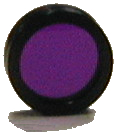Bio-nanophotonics
Halobacterium Salinarum is a baterium which thrives in extremely high salt concentrations. In the cell membrane of Halobacterium Salinarum, photo-receptor protein that proceeds photosynthesis exists. This protein is called bacteriorhodopsin, because it resembles rhodopsin, the visual pigment of animals. Similar to visual pigments, bacteriorhodopsin exhibits high quantum efficiency, i.e. it responds to a single phton in room temperature; it has visual information processing function such as edge detection and motion detection. Our major research area includes: development of optical sensors adapting bacteriorhodopsin; optical position sensitive detector; and image filters that imitate visual neurons. We are also working on inkjet printing of bacteriorhodopsin and conductive polymers, and fabricating of organic solar cells using biomaterials.
・Optical sensors with visual function
・Large size optical position sensitive detector
・Image filters mimicking the visual neurons
・Photodetectors using conductive polymer electrods
・Organic solar cells using carotenoids as electron donors

